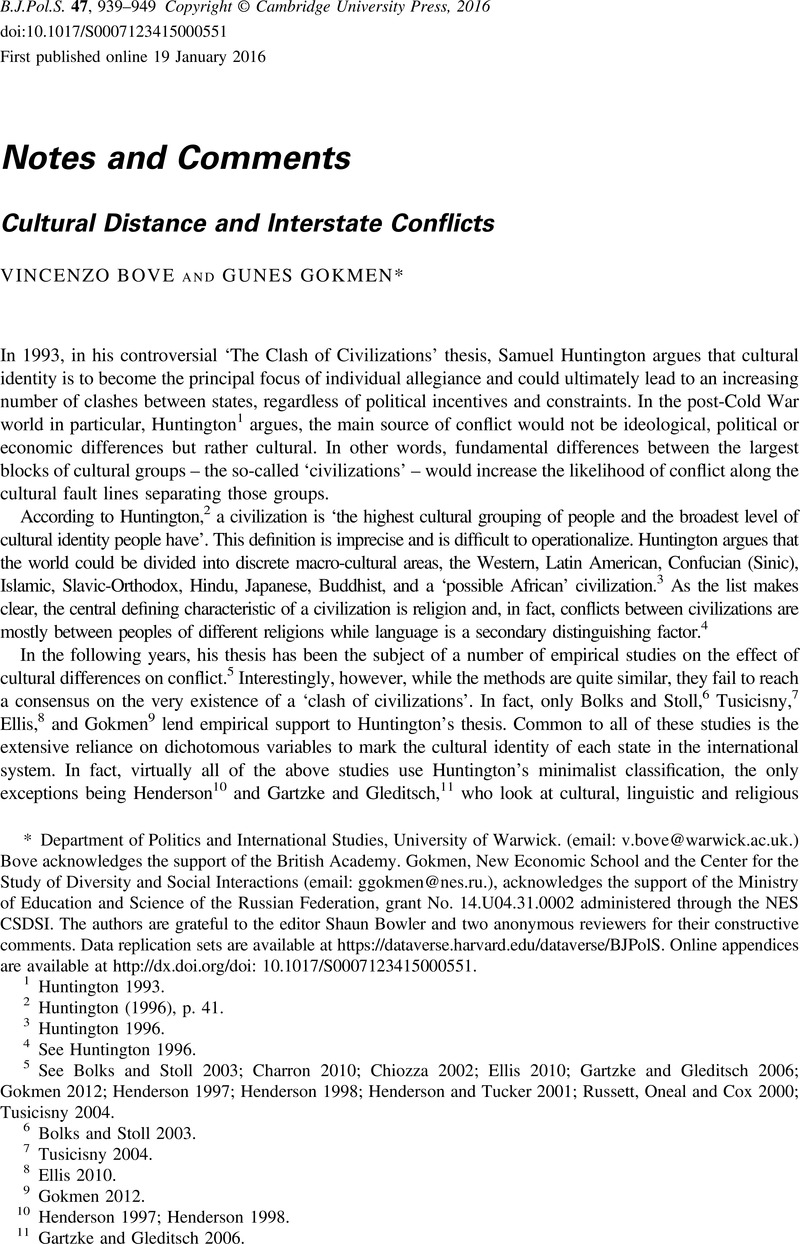Crossref Citations
This article has been cited by the following publications. This list is generated based on data provided by
Crossref.
AKALIYSKI, PLAMEN
2019.
United in diversity? The convergence of cultural values among EU member states and candidates.
European Journal of Political Research,
Vol. 58,
Issue. 2,
p.
388.
Balidemaj, Albina
and
Small, Mark
2019.
The effects of ethnic identity and acculturation in mental health of immigrants: A literature review.
International Journal of Social Psychiatry,
Vol. 65,
Issue. 7-8,
p.
643.
Akaliyski, Plamen
and
Welzel, Christian
2020.
Clashing Values: Supranational Identities, Geopolitical Rivalry and Europe’s Growing Cultural Divide.
Journal of Cross-Cultural Psychology,
Vol. 51,
Issue. 9,
p.
740.
BURGANOVA, I.N
2021.
THE POLITICAL DIMENSION OF INTER-STATE CONFLICTS THE POLITICAL DIMENSION OF INTERSTATE CONFLICTS.
AZIMUTH OF SCIENTIFIC RESEARCH: ECONOMICS AND ADMINISTRATION,
Vol. 10,
Issue. 36,
Ubisch, Sverre
and
Wang, Pengfei
2023.
Typical products for outside audiences: The role of typicality when products traverse countries.
Strategic Organization,
Vol. 21,
Issue. 1,
p.
248.
Sun, Jianqiang
Mostafiz, Fahmida
Cai, Yumei
and
Yang, Fujing
2024.
Cultural distance, language dissimilarity and trade disputes.
Applied Economics,
Vol. 56,
Issue. 8,
p.
941.
Parsons, Brandon
and
Naghshpour , Shahdad
2024.
Cultural Tension and Large- and Small-Scale Internal Conflicts.
Journal of Ethnic and Cultural Studies,
Vol. 11,
Issue. 4,
p.
20.
Yetim, Onat
2024.
Effects of Acculturation and Ethnic Identity on Immigrant Adolescents’ Mental Health.
Psikiyatride Güncel Yaklaşımlar,
Vol. 16,
Issue. 4,
p.
628.
Ponarin, Eduard
and
Afanasyeva, Yulia
2025.
The Effect of Political Regime on the Association of Values with Subjective Well-Being.
Journal of Happiness Studies,
Vol. 26,
Issue. 1,
Hlatky, Roman
and
Landry, Joshua
2025.
Ethnic preferences, domestic audiences and military coalition formation.
Conflict Management and Peace Science,
Vol. 42,
Issue. 1,
p.
32.



